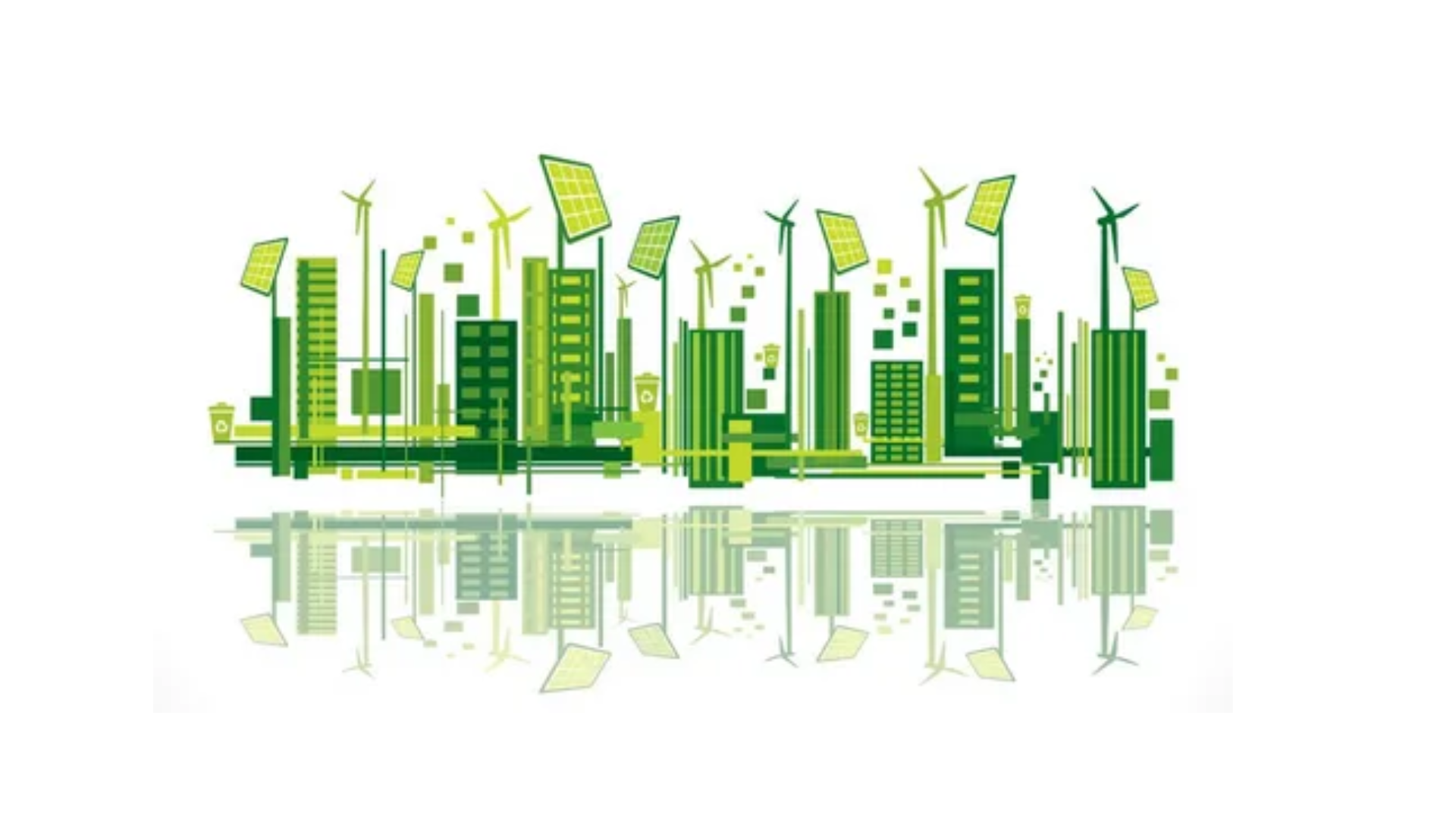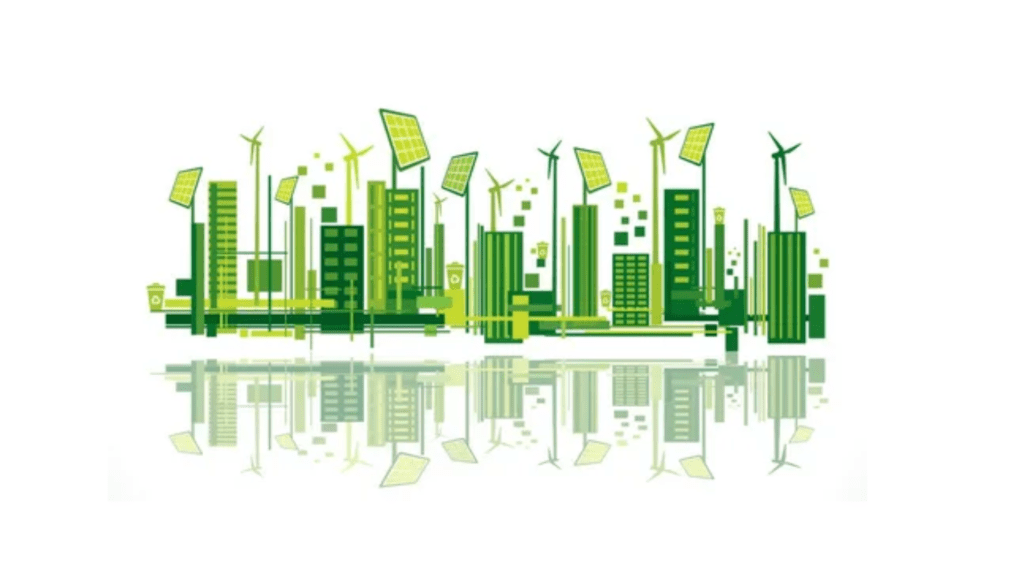In recent years, the world has witnessed a significant shift towards sustainability. From reusable coffee cups to electric cars, the push to save the planet is no longer just the stuff of environmental rallies or sci-fi movies. One major player in this sustainability movement is the real estate industry, and specifically, green buildings. So, what are green buildings? How are they changing the face of real estate? And why should you, whether you live in an apartment or plan to build your dream house, care? Let’s dive into the world of sustainable living and see how green buildings are helping shape the future of real estate—and possibly saving our wallets along the way.
What Are Green Buildings?
At first glance, green buildings may sound like something from a children’s coloring book—houses painted green and surrounded by a forest of plants. But in reality, they are much more than that. Green buildings refer to structures that are designed, constructed, and operated to reduce environmental impact and promote energy efficiency. From how the materials are sourced to how the building operates, the goal is to minimize waste, energy use, and carbon footprint.
Key Features of Green Buildings
To better understand green buildings, let’s break down some of their essential features:
- Energy efficiency: Green buildings are often designed to use less energy. Think solar panels, energy-efficient windows, and well-insulated walls.
- Water conservation: From low-flow toilets to water recycling systems, green buildings are built to conserve water.
- Sustainable materials: Builders use materials that have low environmental impact, like recycled steel or sustainably harvested wood.
- Indoor air quality: Good ventilation, non-toxic paints, and natural light improve the living environment, making it healthier for occupants.
- Waste reduction: Green buildings generate less construction waste, use fewer resources, and often integrate recycling systems right into the building.
You might be thinking, “Great! But how does this actually impact the real estate market?” Hold on to your blueprint; we’re getting there!
The Real Estate Industry and Green Buildings: A Match Made in Heaven?
The real estate sector has been known for being, let’s say, a little behind the times when it comes to adopting new trends. I mean, we’ve all seen those “luxury” apartments from the 80s that still have popcorn ceilings, right? But now, with increased awareness of climate change and a stronger focus on sustainable living, developers, investors, and buyers are seeing the benefits of green buildings.
Increased Demand for Eco-Friendly Homes
Homebuyers and renters are becoming savvier. These days, people want more than just a nice view or a prime location. They want homes that are energy-efficient and environmentally friendly. Not only are green homes better for the planet, but they also help residents save on utility bills. Who wouldn’t want to live in a place that practically lowers your energy bills for you?
A Few Benefits of Green Homes:
| Feature | Benefit |
|---|---|
| Solar panels | Reduces electricity costs. |
| Energy-efficient windows | Keeps heating/cooling bills down. |
| Smart thermostats | Optimizes energy usage. |
| Green roofs | Provides insulation and lowers cooling costs. |
| Natural light designs | Cuts down on lighting needs during the day. |
In addition to saving money, many homeowners feel better knowing they are contributing to environmental preservation.
Higher Property Value
If you own a green building, there’s good news—green properties tend to have higher resale values. Buyers and renters alike are willing to pay a premium for homes that are eco-friendly. Why? Because in addition to being environmentally responsible, they often come with lower operating costs. Plus, there’s a bit of “cool factor” in owning a green-certified home. Your friends won’t be impressed by your granite countertops anymore—they’ll want to know if your house recycles rainwater!
Government Incentives
Governments worldwide are offering incentives to developers and homeowners who choose to go green. From tax rebates to grants, these programs encourage people to invest in sustainable buildings. And let’s be honest, who doesn’t love a good tax break?
In some cities, developers of green buildings can even benefit from zoning bonuses, allowing them to build higher or larger buildings. Talk about a win-win for developers and the environment!
The Science Behind Green Buildings: How Do They Work?
Green buildings aren’t just about sticking some solar panels on the roof and calling it a day. There’s science behind their design and function. From minimizing energy loss to ensuring good air quality, let’s take a look at some of the green technologies that are driving the movement.
Energy Efficiency and Renewable Energy Sources
Green buildings maximize energy efficiency through innovative technologies and designs. One of the key methods is passive design, which involves strategically positioning windows, doors, and walls to take advantage of natural sunlight and airflows.
But energy efficiency isn’t just about clever architecture. Many green buildings use renewable energy sources like solar panels or wind turbines. These renewable systems can significantly reduce reliance on traditional power grids, cutting both energy costs and carbon emissions.
Water Management Systems
Water is another vital resource, and green buildings are equipped with systems to conserve it. Rainwater harvesting systems collect and store rainwater for use in non-potable functions like flushing toilets or watering plants. Greywater systems recycle water from sinks and showers, helping to reduce overall water usage.
These systems are particularly important in regions prone to droughts, where water conservation can literally keep the taps running.
Improved Insulation and Smart Heating/Cooling
Have you ever walked into a building that’s either freezing cold in the summer or sweltering hot in the winter? Green buildings minimize these temperature swings by using high-performance insulation and smart heating/cooling systems. These systems automatically adjust based on occupancy and external weather conditions, ensuring that the building stays comfortable without wasting energy.
Materials That Make a Difference
When constructing green buildings, the materials used are just as important as the design. Recycled materials, like reclaimed wood or recycled steel, are commonly used. These materials not only cut down on the waste produced during construction but also reduce the need for new raw materials, which can be energy-intensive to produce.
And, of course, these materials often come with a unique aesthetic charm. After all, there’s something pretty cool about a house with floors made from repurposed barn wood!
The Challenges and Misconceptions of Green Buildings
Now, before you go and replace your entire house with bamboo and recycled tires, let’s talk about some of the challenges and misconceptions around green buildings.
Cost Concerns
One of the most common concerns about green buildings is the cost. Building a home with energy-efficient features, sustainable materials, and renewable energy systems can be more expensive upfront compared to traditional construction. However, it’s essential to think long-term. Green buildings save money on utility bills, require less maintenance, and tend to have a higher resale value.
Think of it this way: It’s like buying a fancy coffee machine. Sure, it costs more than grabbing a daily latte from the coffee shop, but over time, you end up saving money (and getting to show off your barista skills to friends).
Availability of Materials and Contractors
Another challenge is finding contractors and materials that meet green building standards. Not all builders are experienced with green technologies, and materials like sustainably harvested wood or eco-friendly insulation can sometimes be hard to find. However, as the demand for green buildings grows, so does the availability of these resources.
Misconceptions About Green Building Benefits
Some people believe that green buildings are just a fad or that they don’t make much of a difference. In reality, well-designed green buildings can reduce energy use by up to 40% compared to conventional buildings. And it’s not just about reducing environmental impact—green buildings are more comfortable to live in, improve health through better air quality, and reduce utility costs.
So no, green buildings aren’t just a passing trend—they’re part of a broader movement towards sustainable living that’s here to stay.
The Future of Green Buildings: A Greener Tomorrow?
The future of green buildings looks promising, as more developers, architects, and homeowners embrace sustainable design principles. Governments worldwide are tightening regulations around energy use, water conservation, and waste management, all of which favor the growth of green buildings.
Technological Advancements
We’re seeing rapid advancements in building technology, from smart home systems that optimize energy use to biophilic designs that integrate nature into buildings (like living walls and rooftop gardens). In the future, we can expect even more innovations, like buildings that produce more energy than they consume or self-sustaining vertical farms integrated into urban architecture.
Mainstream Adoption
While green buildings were once considered a niche market, they’re becoming more mainstream every year. From eco-friendly skyscrapers to affordable housing projects that emphasize sustainability, green design principles are being applied to every corner of the real estate market.
This trend is even more noticeable in commercial real estate, where businesses are seeing the benefits of green office spaces in the form of higher employee productivity and lower operating costs.

Conclusion: A Greener, Brighter Future for Real Estate
The rise of green buildings represents a fundamental shift in how we think about real estate and construction. No longer are homes and office buildings simply places to live or work—they are part of a broader movement towards sustainability. As more people embrace the idea of eco-friendly living, the real estate market is adapting, and green buildings are leading the charge.
From reducing energy bills to saving the planet, there are countless reasons to get excited about the future of green buildings. Whether you’re a homeowner, renter, developer, or just someone interested in reducing your carbon footprint, green buildings offer a practical solution to sustainable living.
And who knows? In the future, you might even be bragging about your net-zero home—just don’t forget to recycle that coffee cup while you’re at it!
Now that we’ve unpacked the wonders of green buildings, the real question remains: Are you ready to go green? Or are you still holding onto that popcorn ceiling from the ’80s?



